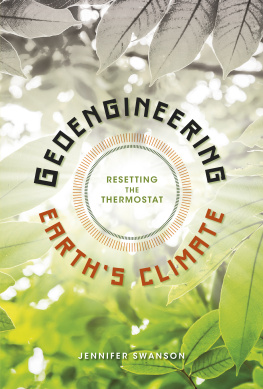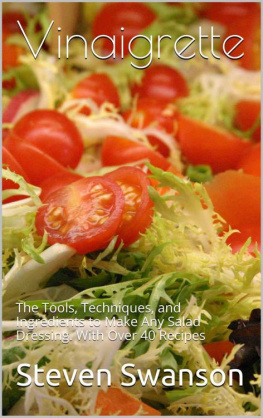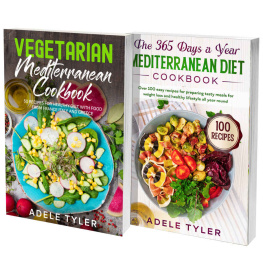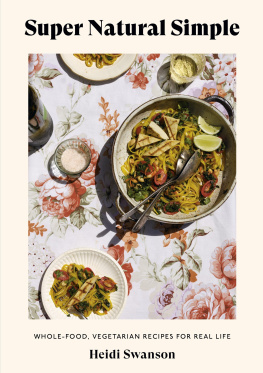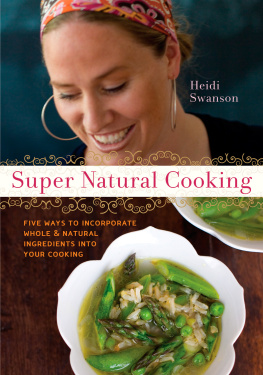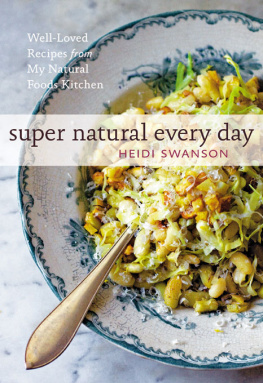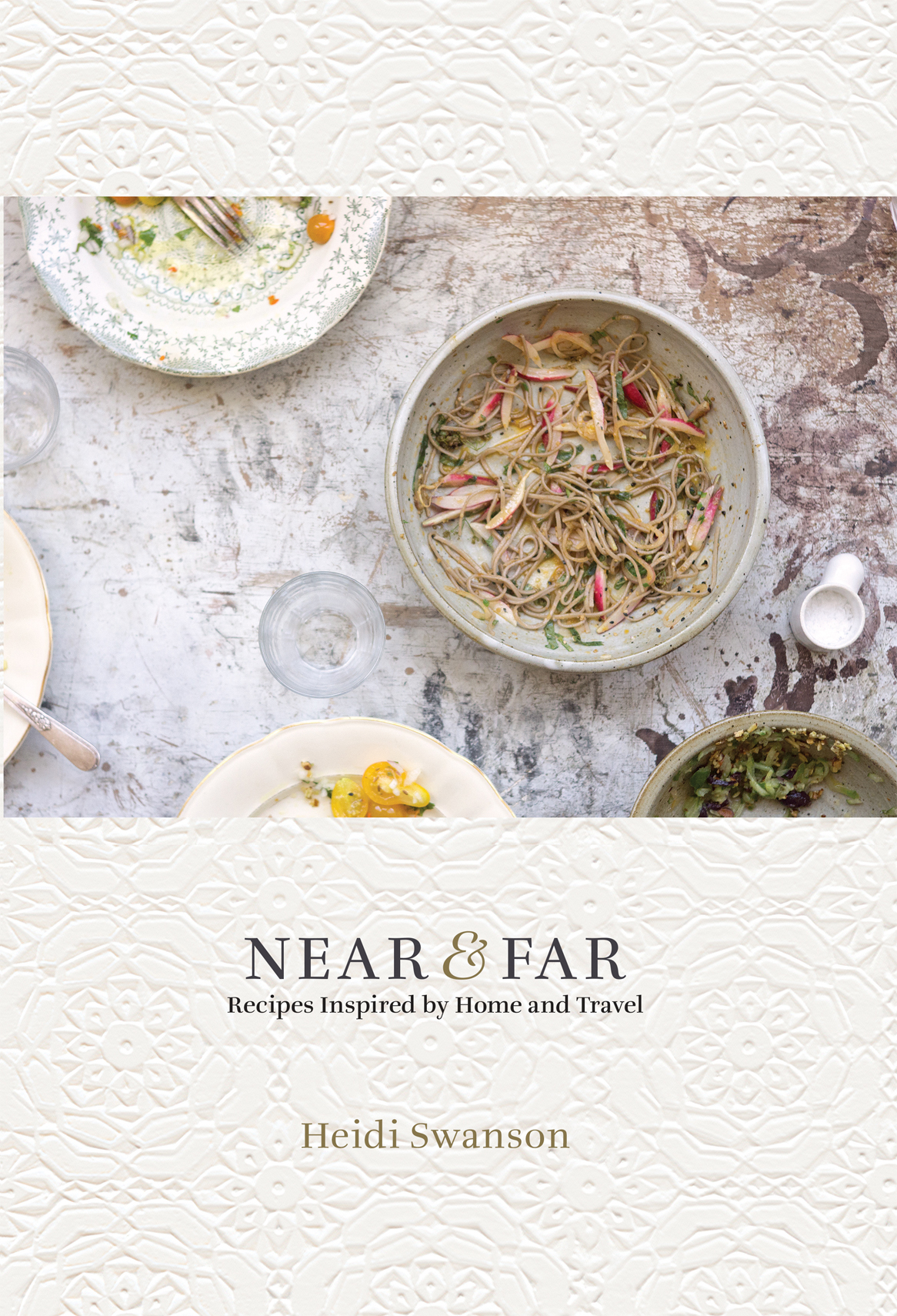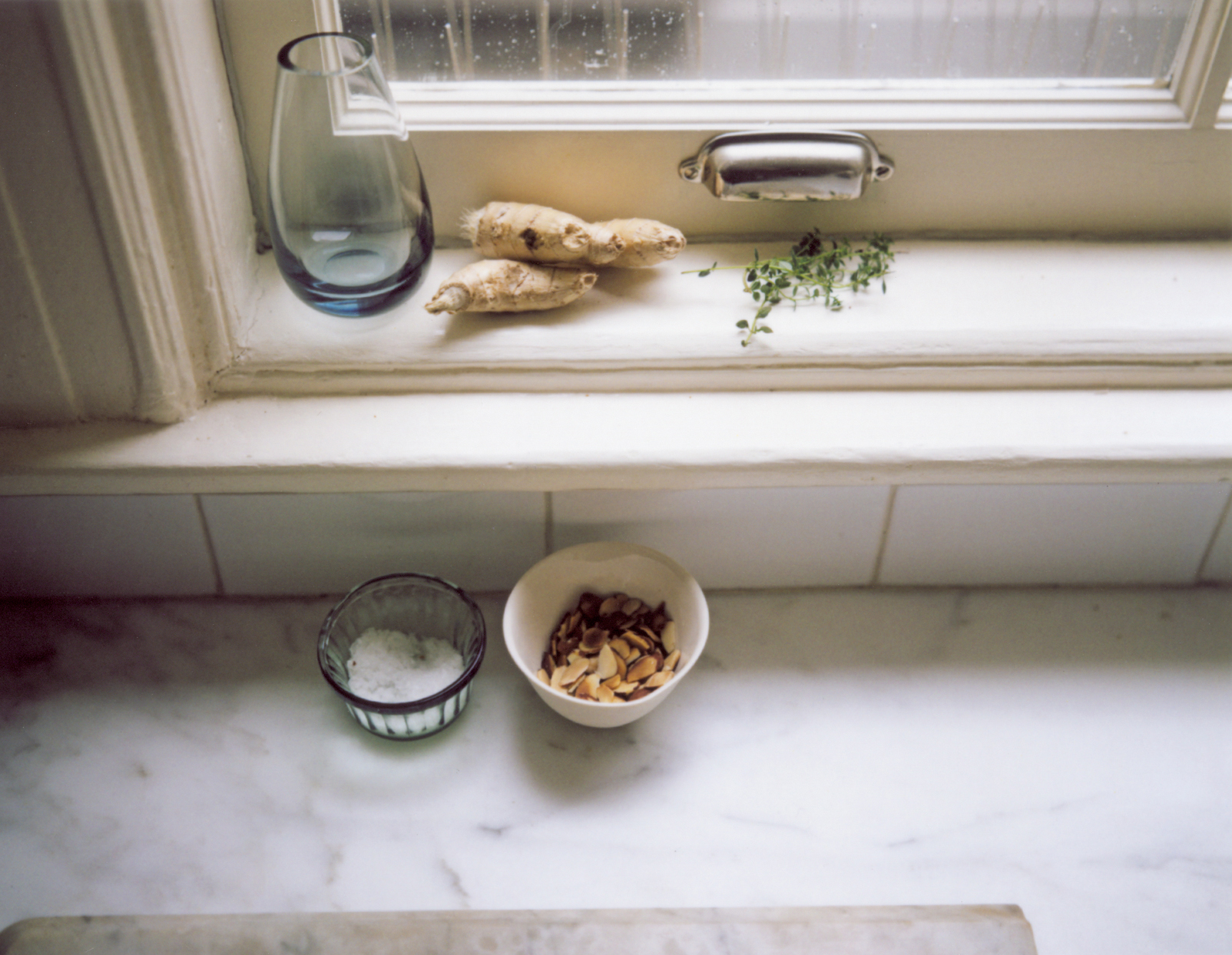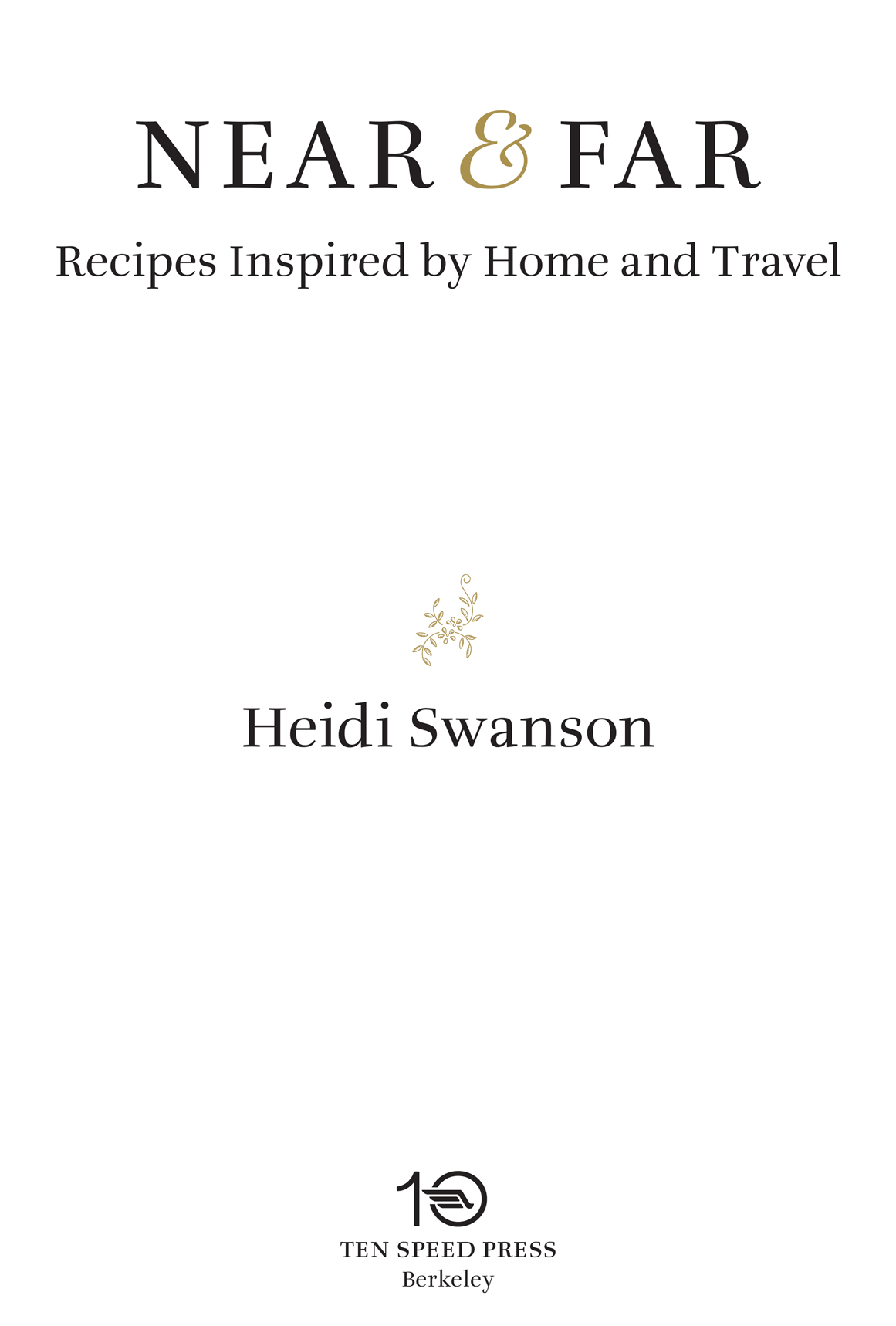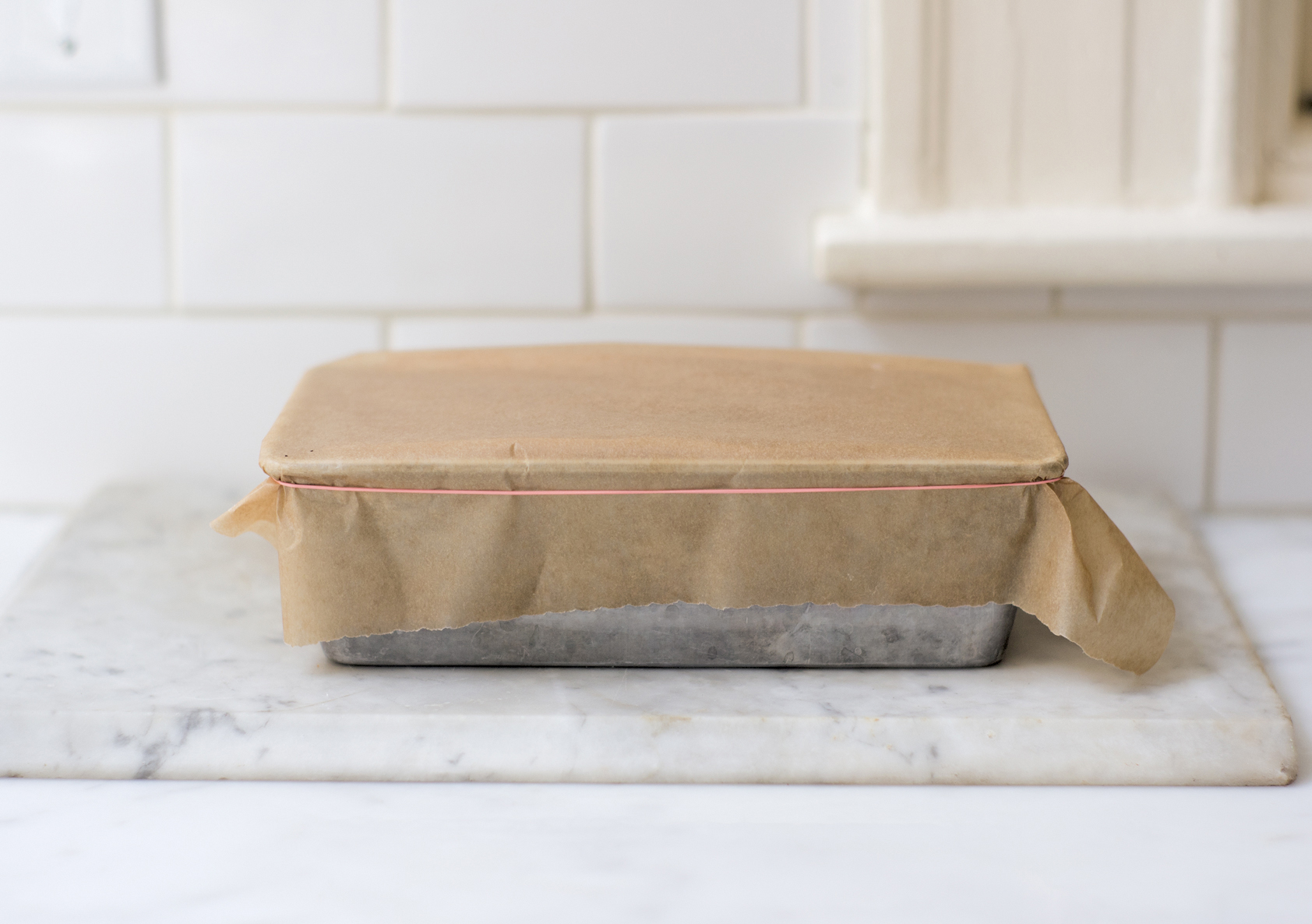Known for combining natural foods recipes with evocative, artfulphotography, New York Times bestselling author Heidi Swansoncircled the globe to create this mouthwatering assortment of120 vegetarian dishes. In this deeply personal collection drawnfrom her well-worn recipe journals, Heidi describes the fragranceof flatbreads hot off a Marrakech griddle, soba noodles and featherlighttempura in Tokyo, and the taste of wild-picked greens from the Puglian coast. Recipes such as Fennel Stew, Carrot & Sake Salad,Watermelon Radish Soup, Brown Butter Tortelli, and Saffron Tagineuse healthy, whole foods ingredients and approachable techniques,and photographs taken in Morocco, Japan, Italy, France, and India,as well as back home in Heidis kitchen, reveal the places bothnear and far that inspire her warm, nourishing cooking.
CONTENTS
INTRODUCTION
JANUARY 25Long, thin whips of deep green puntarelle, a swarm of tiny yellow key limes, dried persimmons with downy skins, red-skinned hand-cracked walnuts, chickpea flour, sprouted mung beans, a friendly giant pomelo with twin glossy leaves attached, stubby bouquets of nameko mushrooms, little yellow pom-poms from snipped branches of acacia tree.
FEBRUARY 15Fresh fenugreek, ruffled baby cabbage, parrot tulips and buttery freesia blossoms, rose petal jam, French radishes, the tiniest, pointiest green onions, and sprout-fed eggs.
MARCH 22Helleborus and daffodil, Tahitian pomelo, dried blood oranges, seascape strawberries, amaranth, nettles, fresh pressed olive oil, kumquats, and lazy clusters of fragrant lilacs ranging in hue from pale, dusty purple to electric violet.
Like many cooks, I keep journals. And when you look at mine, you notice cracked spines and paper that is no longer crisp, or clean, or bright. The corners are dull and dog-eared, the pages filled with my handwritingblack ink, the all-caps penmanship I suspect I inherited from my father. Scraps, scrawls, and sketches are taped to lined pages. Newspaper clippings, laser printouts, and magazine snippets commingle in an unruly mob of fonts. There are photos, stamps, receipts, lists, and sticky notes. I keep the journals for a number of reasons, but mostly so I dont forget detailsthe pattern of an ancient Italian olive grove as seen on approach to the Bari airport, colorful pickles and tiny salads beautifully arranged as part of a bento lunch in Kyotos Nishiki Market, the markings on the craggy, hand-painted bowls piled high with fekka and chebakia pastries at a shop in Marrakech, or the impossibly small cherry tomatoes, no larger than blueberries, at Takashimaya in Tokyo. Closer to home, I note the comings and goings of ingredients in my own kitchen, the details of meals shared, and my favorite farmers market finds week by week.
As I turn the pages of these books, its clear that much of the food I cook is inspired by two things: where I live (Northern California), and where Ive traveled. Food rooted in placeboth near and far. This is a cookbook that attempts to explore both.
Im forty years old now, which means Ive lived long enough to settle in a bit. Im generally happy, curious, and optimistic. I like to think people who know me would concur. My life in San Francisco is a series of rituals and routines. I collect fresh flowers every week. Walk most places I go. Have coffee on Saturday morning with friends. Brew beer with my brother-in-law, but not as often as Id like. Northern California is where I try to stand still a bit, keep things simple, and watch things change around me. The markets evolve incrementally week after weekpoppies giving way to peonies, donut peaches and Pandora leeks giving way to gypsy peppers, amethyst radishes, and purple wax beans. The pruned trees in Golden Gate Park go from twiggy and lifeless to lush, green, and full in a steady march through spring into summer and fall.
Home is good. That said, I started traveling, extensively, as soon as I found a job after college and could afford to. I spent the bulk of my bank account on a flight to Europe, a trip that showed me I could explore far-flung places on my own dollar, sparking a desire to see more of the world I was a part of. In an interview, Pico Iyer said, Its only by stepping out of your life and the world that you can see what you most deeply care about and find a home. And home, in the end, is of course not just the place where you sleep. Its the place where you stand. Travel inspired my thinking, relationships, sensibility, sense of self, and, eventually, the way I approached cooking. I do my best to explore someplace new, or revisit a place I love, a couple of times a year.
Once youre home from a trip, details tend to fall away. I noticed, long after Ive forgotten the names of monuments, train stations, or boulevards of a city Ive traveled to, the flavors would stay with me. Every place has its own always evolving culinary voice. And its not just ingredients and flavors, but also techniques, traditions, and vessels. In the broadest sense, these impressions and memories are what inspire new ideas in my own kitchen as well as spark the urge to re-create dishes or flavor combinations that made the deepest mark.
The Book
The book is divided into two major sectionsNear and Far. The Near section focuses on recipes inspired by my life in San Francisco and Northern California. Far is divided into five chapters: Morocco, France, India, Italy, and Japan. These are places with rich, often ancient, culinary culturesplaces Ive spent a good amount of time, in many cases with extended or multiple trips over a span of years. Ive also threaded a few of my favorite travel-friendly preparations into a section titled En Route.
At the start of each chapter, I list favorite ingredients traditionally used in the cuisine of that place (My Moroccan Pantry, My Japanese Pantry, and so on). They are the ingredients that resonate with me and speak to my cooking approach bestthey arent intended to be comprehensive but are more a sketch of the ingredients I turn to most or am most enthusiastic about using within that palette. Many are used within the recipes here, but not necessarily all. Theyre listed this way for quick brainstorming and inspiration in your own kitchen.
Within each chapter, recipes are organized starting with lunch, moving on to dinner, drinks, and treats. I tend to think of the next days breakfast at the end of the day, so those close out the chapters.
The Recipes
The recipes in this book are rooted in place and correspondingly organized. I tend to be drawn to places where natural foods are celebrated and traditional foodways are in practice. Much of that influence is woven into the recipes throughout. That said, its not the sort of cookbook that is going to drill down on the nutritional benefits of this pulse or that vegetablealthough those considerations are a part of how I cook and certainly one aspect of what I think about as I approach a recipe. For those of you who have Super Natural Cooking or Super Natural Every Day on your shelf, consider this a companion volume. Youll recognize the spirit of the previous volumesreal food and powerful vegetarian ingredients made into dishes that are worth making.



